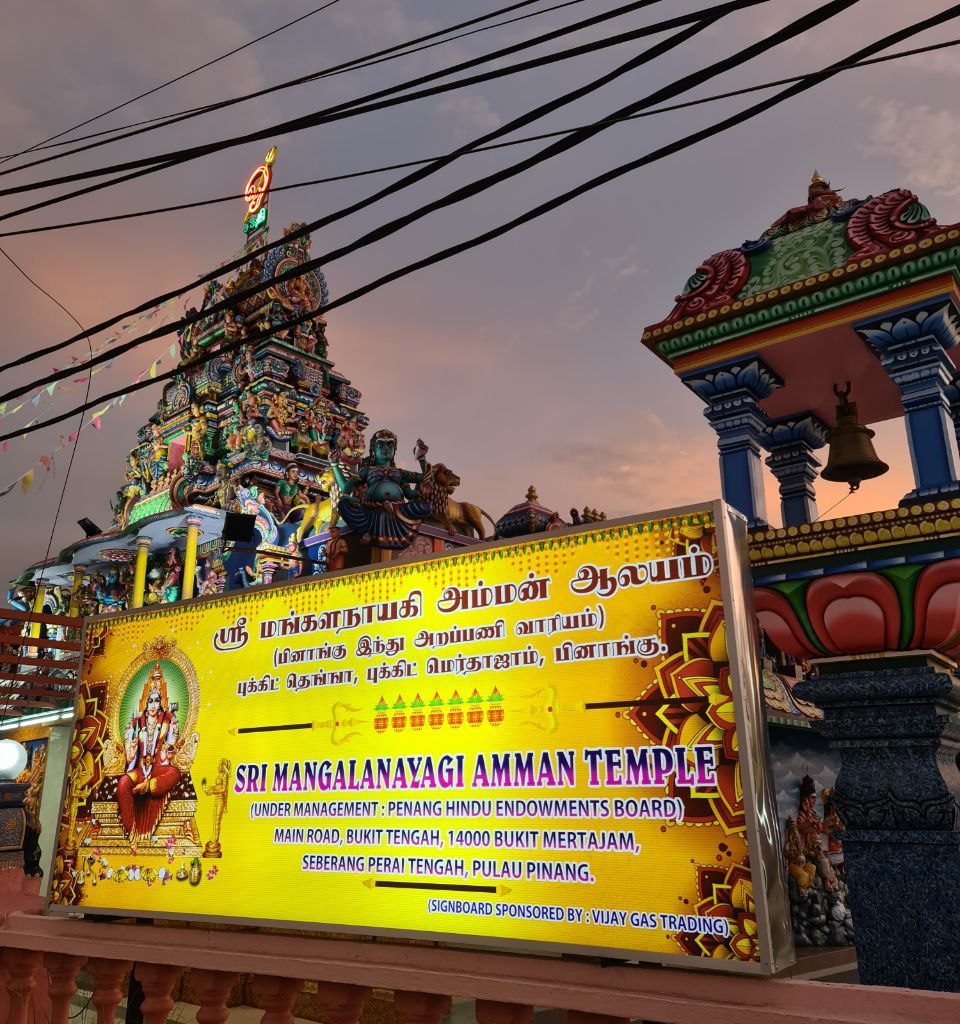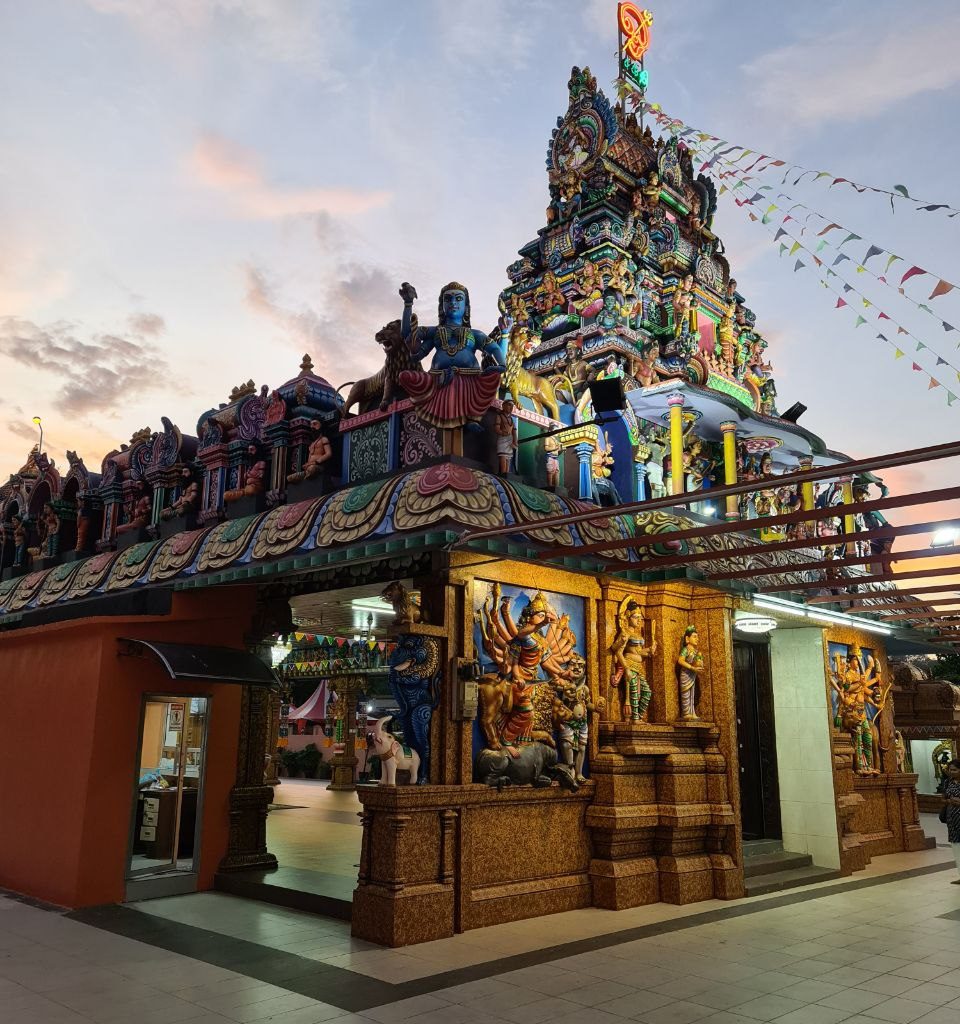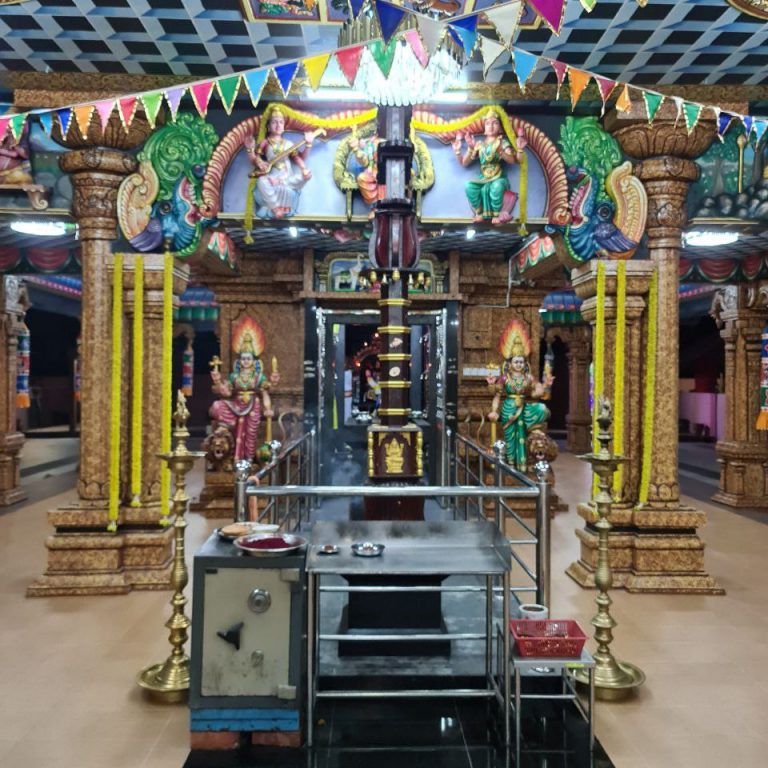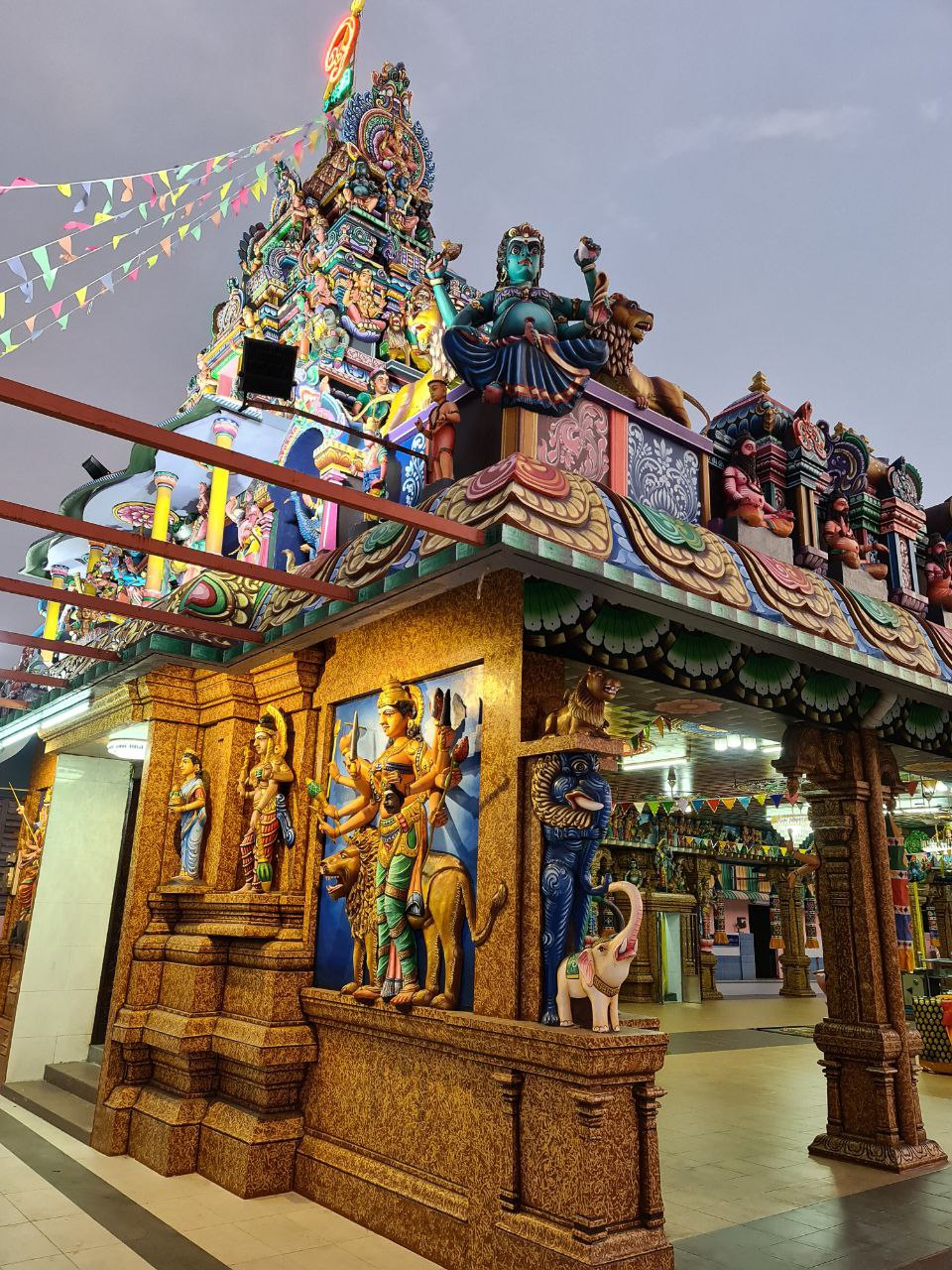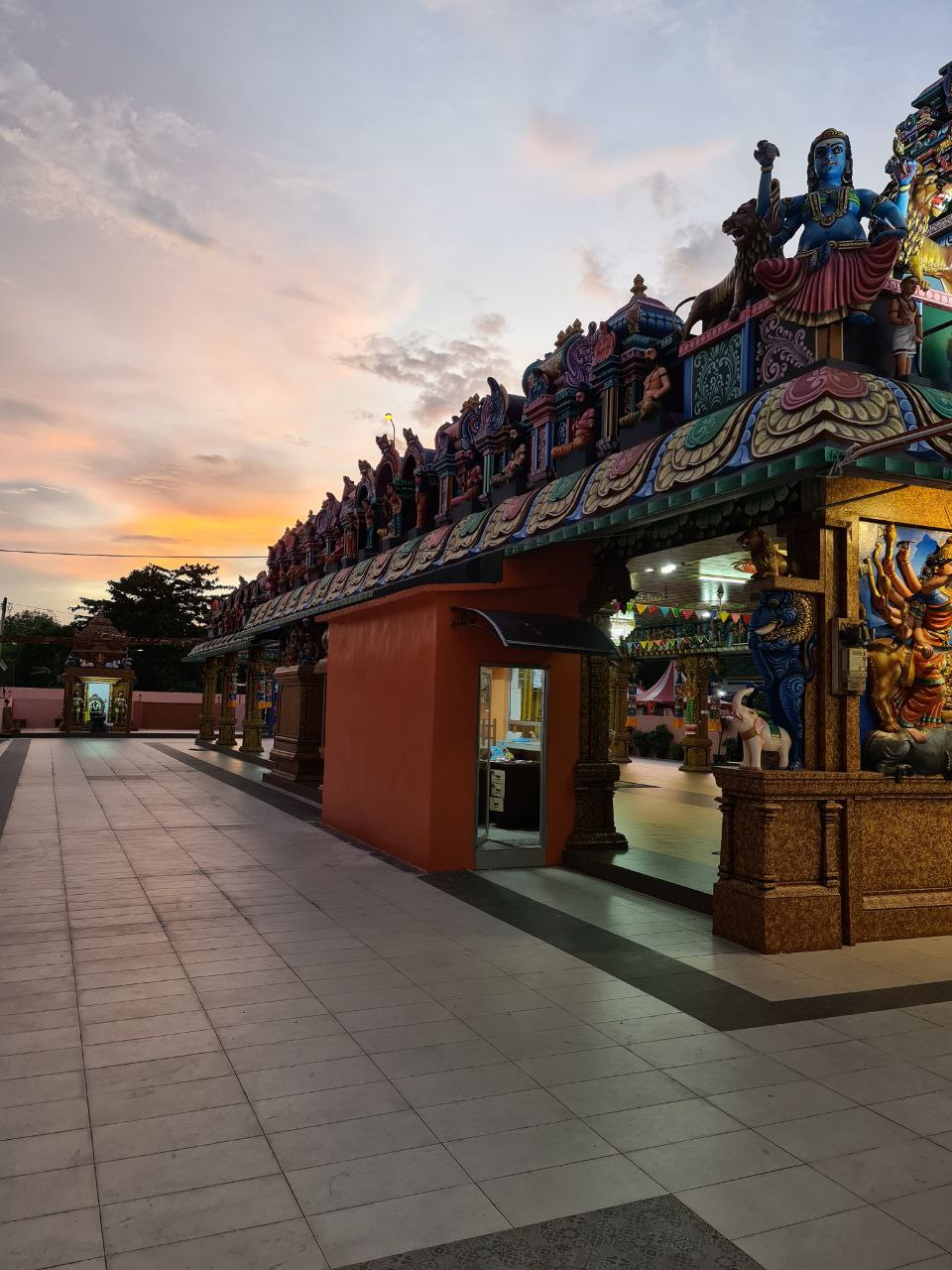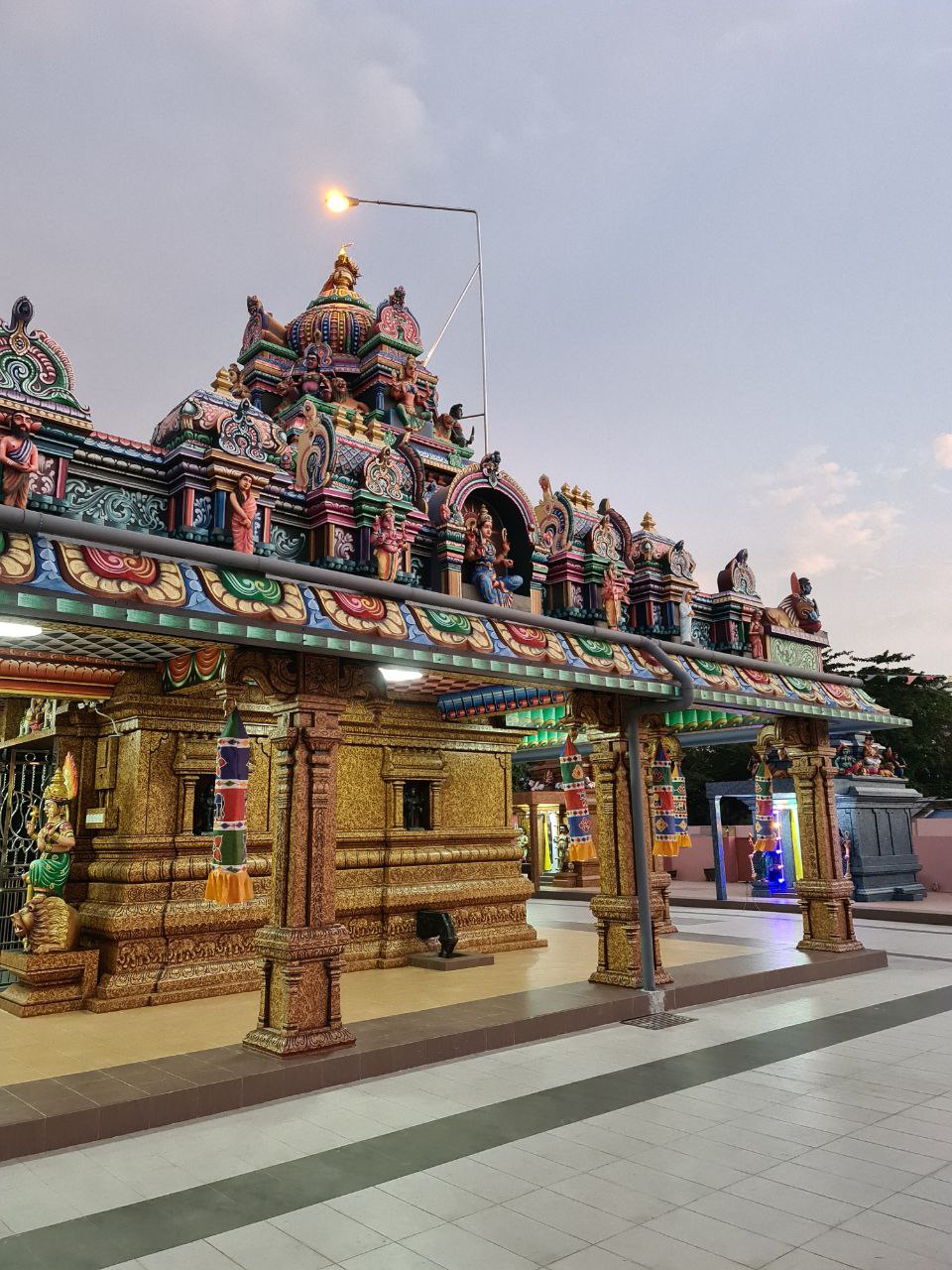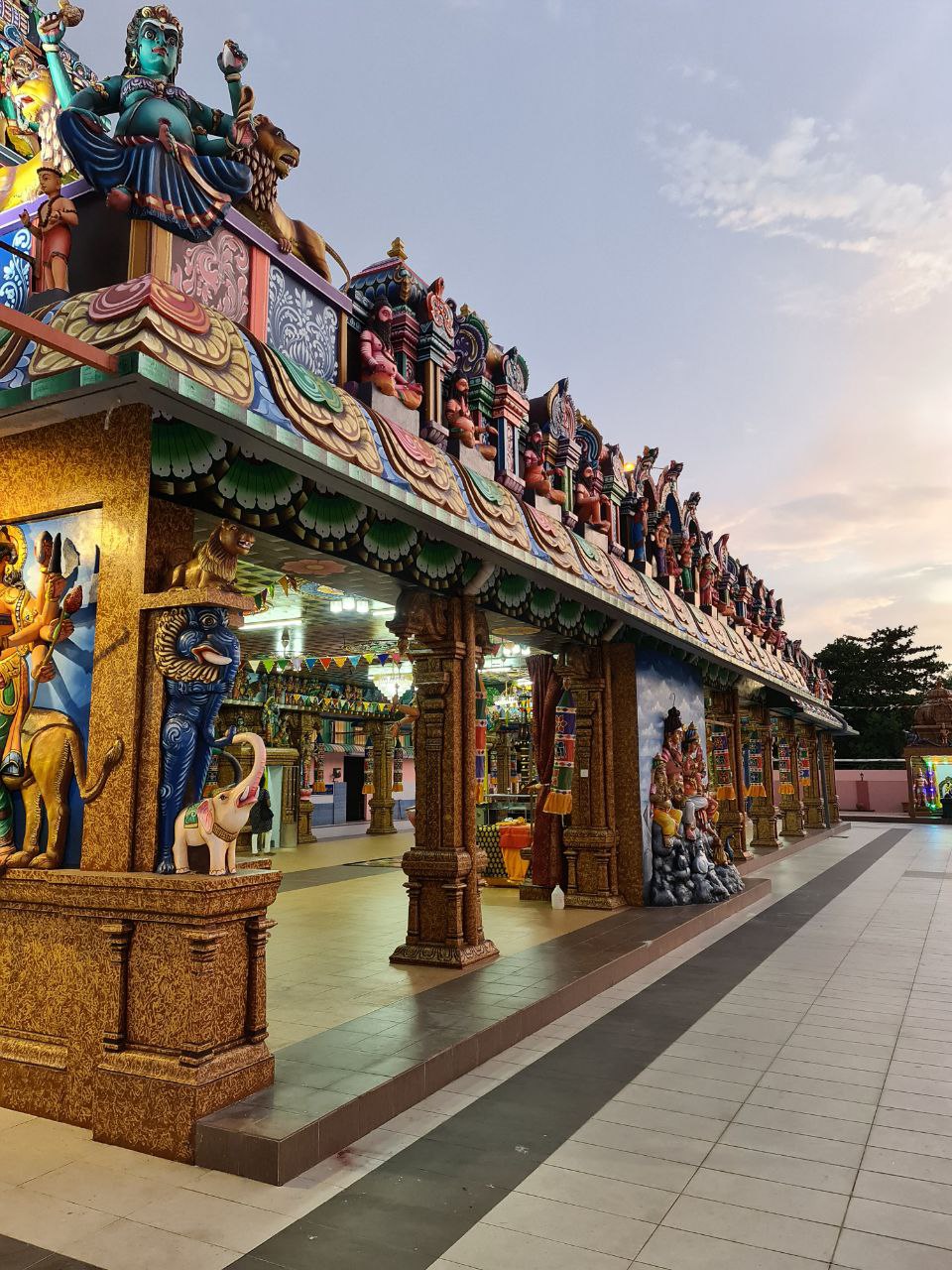Kuil Sri Mangalanayagi Amman, Bukit Tengah
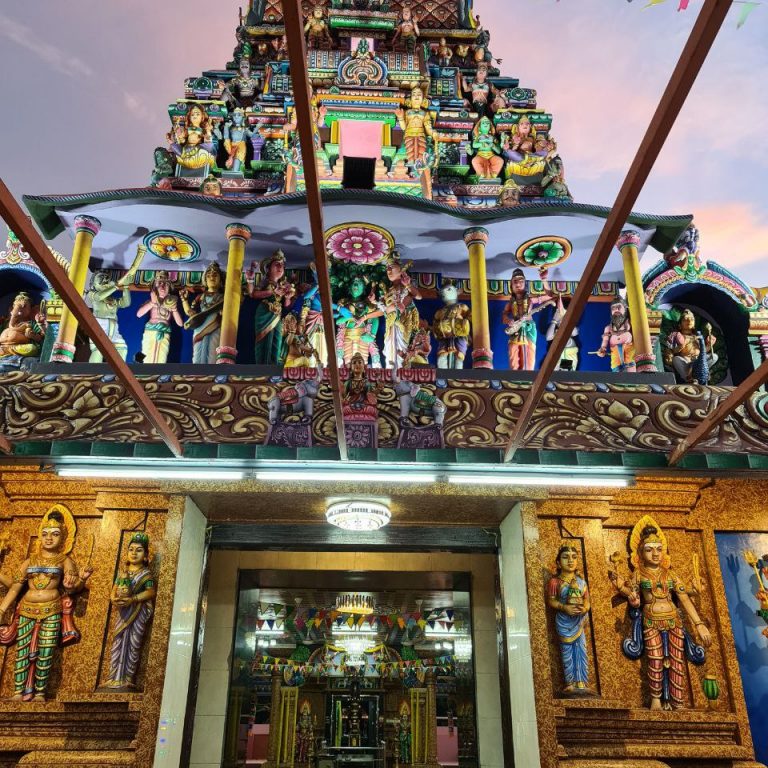
Location:
2444, Bukit Tengah Road, Bukit Mertajam, 14000 Penang, Malaysia.
Facebook:
Sri Mangalanayagi Amman, Bukit Tengah
History
The establishment of British rule in Penang and Province Wellesley, in 1786 and 1800 respectively, led to the arrival of a large number of South Indians on regular basis from the Indian Sub-continent. In the early stage, they were brought in to help develop the infrastructure of the island. With the acquisition of Province Wellesley in 1800, and the setting up of coffee, sugar, later still rubber plantation, the demand for Indian labor increased even more. Thus, the British colonial rulers encouraged more Indian laborers from India to meet the demand in the public and private sector enterprise.
In the 1860s, there was a great demand for coffee and sugar, therefore the British encouraged the opening of several plantations for the crops in Province Wellesley (now Seberang Perai). One such plantation that was opened up in what is now Bukit Tengah is the Golden Grove Estate. The area was found suitable for sugar cane and coffee, but following the failure of coffee plants, sugar cane become the major crop of the plantation.
In the early stages of the development of the Golden Grove Plantation, the plantation workers living conditions were indeed bad. There were provided with basic living facilities such as roof house to live in. One of the first things that were done by the laborers was to set a temple for village deity Amman. Initially, only a Trisoolam was used to represent the presiding deity, Mangalanayagi Amman. Subsequently, the living conditions were improved and better facilities were provided by the European plantation management. This led to the development of a proper temple in the plantation by the workers of the plantation. Therefore in 1886, a proper temple was built, and the granite statue of Mangalanayagi Amman was brought from India and duly set installed as the presiding deity. However, the first proper ritual consecration was only conducted in 1927.
The plantation temples were managed by the Temple Management Committee which was made up of the senior and influential overseers (Kangani or Thandals) and the clerical staff of the plantation. The plantation temples were maintained by a small sum of money deducted from the laborer’s pay and further subsidized by the plantation management. A priest was appointed by the plantation management to carry out regular worship rituals. The temple also celebrated its annual festival and the workers took the opportunity to fulfill their vows to the deity.
In 1935, two major events took place that was to change the course of the temple’s development. One was the construction of a road connecting Bukit Mertajam and Perai to the south. This road then becomes the main road link to the south. This factor also spurred the development of the new township of Bukit Tengah. The second factor was the change in ownership of the Golden Grove Plantation. It was bought over by a plantation conglomerate and amalgamated into the Batu Kawan Plantations.
With the onset of the Second World War in 1941, the rubber plantation continued its operation especially since the Japanese needed rubber products for their war machine. The temple continued to operate during the tiring times provided solace to the devotees of the area. With the end of the war, the British owners returned to take over the operations of the estate. This post-war period also saw a great demand for rubber products and the plantation continued to operate vigorously. Indeed, this period saw an increase in income of the plantation workers and consequently, the temple festivities were celebrated with great enthusiasm.
The most profitable phase of the rubber plantation industry was during the Korean War period of the 1950s. Since then, there has been a decline in the profitability of the rubber estates. This factor, coupled with the perceived uncertainty following independence in 1957, led to the sale of many European-owned plantations, including the Batu Kawan Plantation. Most of the plantation land of the former Golden Grove Estate was fragmented and sold off to local speculators. Most of the land which had mature rubber plants was subdivided and converted to smallholdings.
These changes inevitably meant the displacement of mostly the Indian laborers who had been working on the estates. Most of them were left jobless and others moved to nearby towns to work in the industrial sector. A direct result of this was a marked decline in the Indian labor population. Many of them took the opportunity to return to India, other moved on to work in other plantations, while others took employment in the towns.
The decline of the bank of devotees affected the well-being of the temple. Clearly, fragmentations of the estates and the displacement of Indian workers caused a sharp decline in devotees to the temple. Moreover, with the extension of the municipal boundaries, the plantation temple has now evolved into an urban temple. Since no more funds were coming from the plantations, the temple was now forced to depend on the meager income derived from donations and worship ritual fees (Archanai) from the small urban Hindu population. All these factors took a toll on the temple as it began to suffer neglect and poor maintenance.
By the mid-1960s, the temple was in dire shape and it was falling apart and even regular prayers rituals too were not observed fully. Nonetheless, what kept the temple going was the dedication and devotion of the local Hindu residents in providing for the bare requirement of the temple.
In 1965, residents of that area decided that something must be done to restore the temple as well as to keep the temple operational. So, an action committee was formed to renovate the temple. Towards this effort, a fund collection drive was launched; the Hindu devotees donate generously towards the project. They also obtained funds from the Penang State Government, which under the behest of the then Chief Minister gave RM20,000.00 for the project. Nonetheless, the fund collected was insufficient and the renovation project was stalled. Therefore, the temple committee was determined to double their efforts to seek more funds from the public for the renovation project. Though the renovation project ticked off in 1968, it was not until 1976 that the work of renovation was completed. Thus, the second consecration of the temple was carried out on a modest level on 3rd September by the temple committee under the chairmanship Mr.K.Veraiyah.
In 1983, a chariot for Sri Mangalanayagi Amman was commissioned. In the same year, Theemithi festival was held. On 8th July 1987, under the chairmanship of Mr.K.Samivellu, a third consecration was performed. On 1st February 2004, under the chairmanship of Mr. M.Sundaram, a fourth consecration was performed. On 9th September 2018 ritual prayers (Palasthabanam Poojai) has taken place before the next consecration which will be held every 12 years. Concerning the development of the temple, devotees have requested Penang Hindu Endowments Board (PHEB) to take over temple management. This would be an essential and beneficial act to enhance better development and bright future of the Temple. Hence, on 19 July 2022, the temple has been taken over by PHEB successfully abiding the legal processes. At present, the temple is under the chairmanship of Mr.R.Arikrishnan has undergone extensive renovation, and the fifth consecration ceremony (Maha Kumbhabishegam) is taken place on 9th June 2022.
Temple Management Committee
| NO | NAME | POSITION |
|---|---|---|
| 1 | MOHAN DORAISAMY | CHAIRMAN |
| 2 | GOBICHAN | DEPUTY CHAIRMAN |
| 3 | MURUGESWARAN KANIYASAN | SECRETARY |
| 4 | SHARMILA DEVI CHINAYA | TREASURER |
| 5 | K NAGENTHIRAN KARUPPIAH | TMC |
| 6 | PUSPAKARAN KUPPUSAMY | TMC |
| 7 | DATO RAJAMANIKAM KARUPPIAH | TMC |
| 8 | MUNIANDY KATTAN | TMC |
| 9 | MALLIKA KRISHNA | TMC |
| 10 | KANDAGI SUNDARAM | TMC |
| 11 | JEEVAGARAN DANABAL | TMC |
| 12 | PARAMES | TMC |
| 13 | SARAVANAN | TMC |
| 14 | THEEPAN RAJ MORGAN | TMC |
| 15 | VISHAL | TMC |
| 16 | LOGANESAN MUNIANDY | TMC |
| 17 | SUCHU MUNIANDY | TMC |
| NAME | POSITION |
| Mohan Doraisamy | Chairman |
| Nagenthiran Karrupiah | Deputy Chairman |
| Barathidasan | Secretary |
| Puspakaran Kuppusamy | Treasurer |
| Gobin Chan | Member |
| Sugenthen | Member |
| Mallika Krishna | Member |
| Parameswari Subramaniam | Member |
| Nagalingam | Member |
| Ravi Subbaiyah | Member |
| Kandagi Sundaram | Member |
| Sharmila Devi a/p Chinaya | Member |

